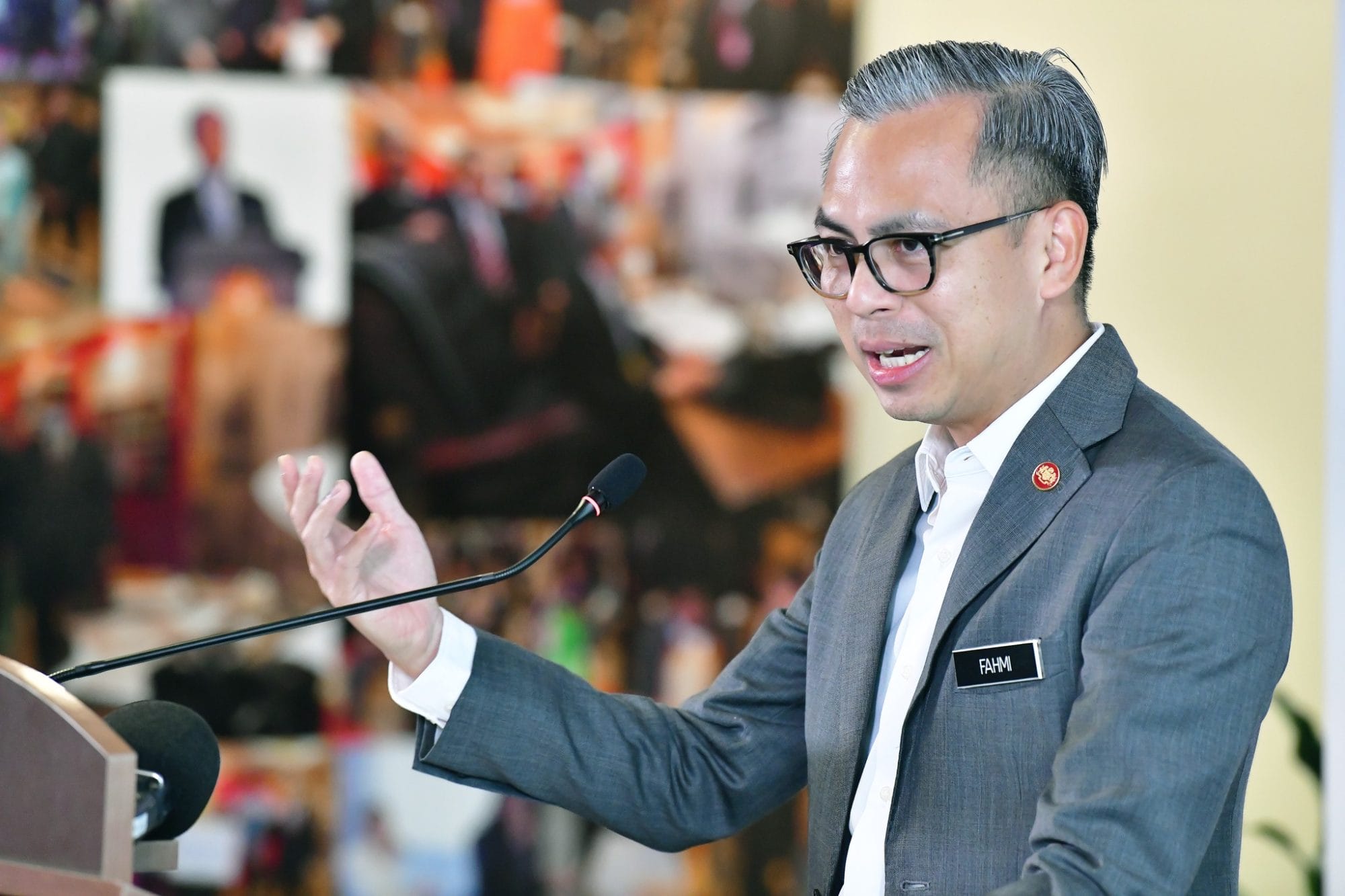
Published by AstroAwani, MYsinchew & theSun, image by theSun.
Gender equality is not just a fundamental human right; it is a crucial component in combating violent extremism. Growing empirical evidence shows a strong link between gender discrimination and extremist violence, highlighting the need to integrate gender perspectives into strategies for preventing and countering violent extremism (P/CVE).
Efforts to achieve gender equality and eliminate violence against women, as outlined in the UN’s Sustainable Development Goals, have faced setbacks exacerbated by the COVID-19 pandemic. Reports indicate that states are not on track to attain gender equality by 2030 (United Nations, 2022).
The static progress to eliminate gender discrimination is also reflected in the realities of our country. Notwithstanding Malaysia’s status as a signatory to the UN Convention on the Elimination of All Forms of Discrimination Against Women (CEDAW), misogyny remains deeply entrenched in the social fabric.
This inherent bias against women is even reinforced by male political figures who frequently make sexist remarks to objectify and demean their female counterparts, often without facing any consequences (Pillai, 2022; Suppiah, 2020; Supravani, 2023).
When politicians publicly make demeaning remarks toward women, it signals to the broader public that such behaviour is acceptable and thus becomes normalised.
However, this carries heavy societal consequences.
From gender-based discrimination to gender-based violence
Numerous systematic and cross-cultural studies have shown that gender discrimination strongly predicts violence against women and girls (VAWG), including femicide, sexual violence, intimate partner violence, and human trafficking (Heise and Garcia-Moreno, 2002; Yodanis, 2004; Devries et al., 2013; Stöckl et al., 2013).
Consistently, statistics show that violence against women in Malaysia remains a significant issue, with rates that are relatively high compared to global and regional averages, as reported by UNDP and WHO.
National data from DOSM has shown increases in reported domestic violence cases, particularly during the COVID-19 pandemic, with 9,015 cases reported over two years since the 2020 Movement Control Order (Yunus, 2021). Although 2023 saw a 24.2% decrease compared to 2022, many cases often go unreported.
The Women’s Aid Organisation (WAO) in Malaysia provides additional data indicating a persistently high number of cases, with over 5,000 cases of domestic violence reported annually since 2015. Furthermore, a survey by WAO found that 62% of Malaysian women experienced workplace sexual harassment. Two years ago, the Anti-Sexual Harassment Act 2022 (ASHA) established a tribunal for handling such complaints.
Additionally, worryingly enough, Abdullah et al. (2012) discovered that belief in conflict resolution via aggression is common in Malaysia, particularly among male respondents.
Misogyny, Violent Extremism, and Terrorism
A growing body of research studies and systematic reviews have investigated the links between violent misogyny and violent extremism, revealing a complex relationship where misogynistic attitudes and gender-based violence often intersect with radicalisation and extremist behaviours.
As Pain (2014) posits, domestic violence and violent extremism both aim to exert power and control through fear. Notably, both are rooted in patriarchal norms, where misogyny justifies the subjugation of women who challenge male dominance (Rottweiler et al., 2024).
Research by Johnston & True (2019) shows that individuals in Asia (Indonesia, Bangladesh, and the Philippines) who support VAWG are three times more likely to support violent extremism. Correspondingly, Smith (2019) notes that male perpetrators of terrorism often have histories of interpersonal violence, especially VAWG. For example, Guy Reffitt, a member of two far-right militias who partook in the U.S. Capitol riot on January 6, 2021, admitted to physically harming his wife during a domestic dispute (Roy, 2024).
Among systematic reviews, the Institute for Strategic Dialogue (2023) and the Global Network on Extremism and Technology (2022) establish that online communities promoting misogynistic content often act as “gateways” to more organised forms of hate and violence, with individuals exposed to misogynistic ideologies showing an increased likelihood of engaging in extremist acts.
The UNDP (2021) also finds that extremist groups exploit misogynistic narratives as rallying points to unite members. Similarly, the European Institute for Gender Equality emphasises that extremist propaganda often includes misogynistic narratives to attract men who feel marginalised by gender equality.
Moreover, extremist organisations like Islamic and right-wing terrorist groups are notorious for their renunciation of gender equality. They outwardly express misogynistic ideologies and behaviours to uphold a hierarchical and restrictive gender order (OSCE, 2022).
The above empirical evidence powerfully underscores the need to recognise misogyny and histories of domestic violence as significant early indicators of potential terrorism. This insight is crucial for developing more effective prevention and intervention strategies.
Masculinity and Traditional Gender Roles
Besides, terrorist propaganda often portrays terrorists as charismatic, masculine, and heroic, aiding recruitment and radicalisation (UN Women, 2022). In patriarchal societies, men and boys must live up to unattainable masculine ideals. Failing to do so leads to shame and exclusion. Violent extremist groups offer a way to reinforce their masculine identity, at women’s expense.
Similarly, “traditional” gender hierarchy can accelerate women’s radicalisation. Women often support this hierarchy due to societal expectations of marriage and child-rearing. Ironically, many female members of extremist groups have faced sexual gender-based violence (SGBV) or patriarchal control, leading them to join for protection from male violence.
However, the international community has largely overlooked recognising misogyny as a form of extremism, with the United Kingdom being the only country to do so formally.
Furthermore, gender mainstreaming is not common in P/CVE policy frameworks as most national action plans do not mention gender or sex. When female terrorists are noted, they are merely seen as fighters’ wives, ignoring their motives and roles within terrorist groups.
Meanwhile, as illustrated above understanding gender power relations is integral to grasping the pathways to violent extremism and the operations of terrorist organisations. These insights are crucial for crafting effective P/CVE strategies. Hence, vigorous gender mainstreaming is essential in P/CVE frameworks.
Policymakers and leaders in civil society organisations (CSOs) must lead the counter misogynistic narratives and promote gender equality by empowering women in P/CVE programmes. Engaging with women CSOs not only amplifies women’s voices but also integrates the government’s mechanisms with civil society.
For instance, Indonesia and the Philippines collaborate with local women CSOs and UN Women to incorporate a gender-sensitive approach in their P/CVE national action plans. Indonesia’s Working Group on Women and Countering/Preventing Violent Extremism (WGWC) coordinates dialogue and knowledge sharing between government bodies and CSOs on gender mainstreaming in P/CVE (UN Women, 2022).
Moreover, training on the intricate relationship between violent misogyny and extremism should be provided to policymakers, security officials, and civil society actors. Implementing this knowledge can help identify and address misogynistic terrorism. The Ministry of Education should consider including gender education in school curricula to promote gender equality and prevent misogynistic beliefs among youth.
Since evidence strongly indicates that gender-based violence can be a significant early indicator of potential terrorism, authorities should routinely investigate individuals with a history of domestic violence for potential extremist connections.
Likewise, addressing the spread of online misogynistic rhetoric and gender-based violence is vital, as they often serve as recruitment tools for radical groups. Platforms should implement victim-centred policies, improve transparency, enhance cross-platform cooperation, and apply gender-sensitive moderation to mitigate these risks effectively.
Additionally, a national referral system should detect early signs of violent misogynistic extremism and provide corrective programs. Gender-specific radicalisation indicators and assessments of hostile sexism should be used to evaluate misogyny’s role in their radicalisation process.
Given the robust evidence linking gender-based discrimination to violence and subsequent radicalisation, it is imperative to give this problem wider recognition through more comprehensive policies aimed at eradicating gender discrimination, including formally recognising it as a form of extremism and integrating it prominently within P/CVE frameworks.
Dr Margarita Peredaryenko and Avyce Heng are part of the research team at EMIR Research, an independent think tank focused on strategic policy recommendations based on rigorous research.

